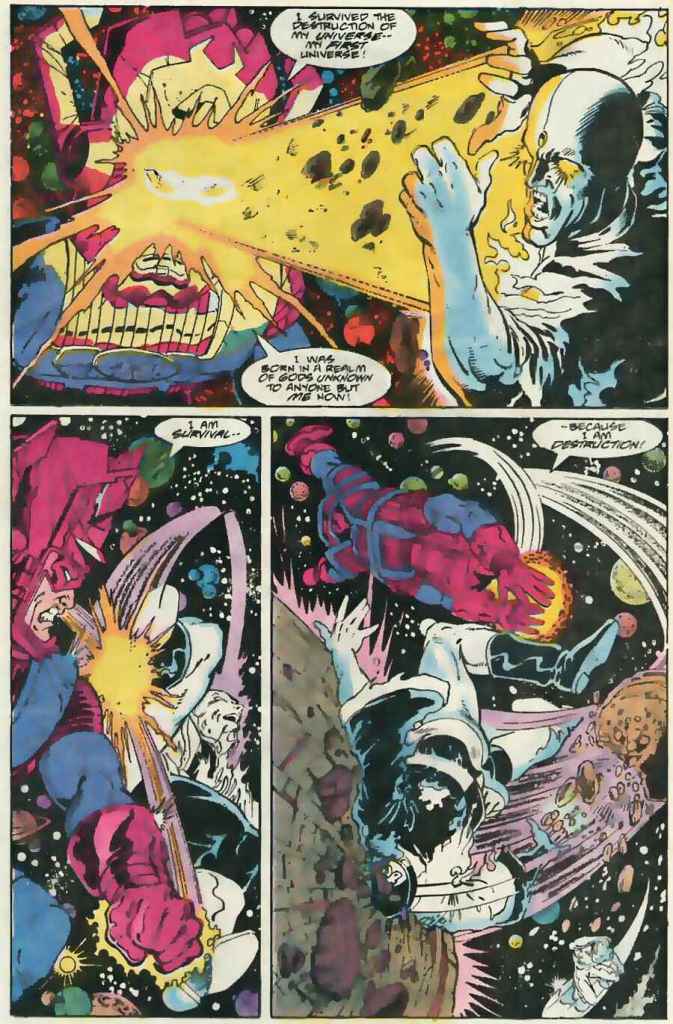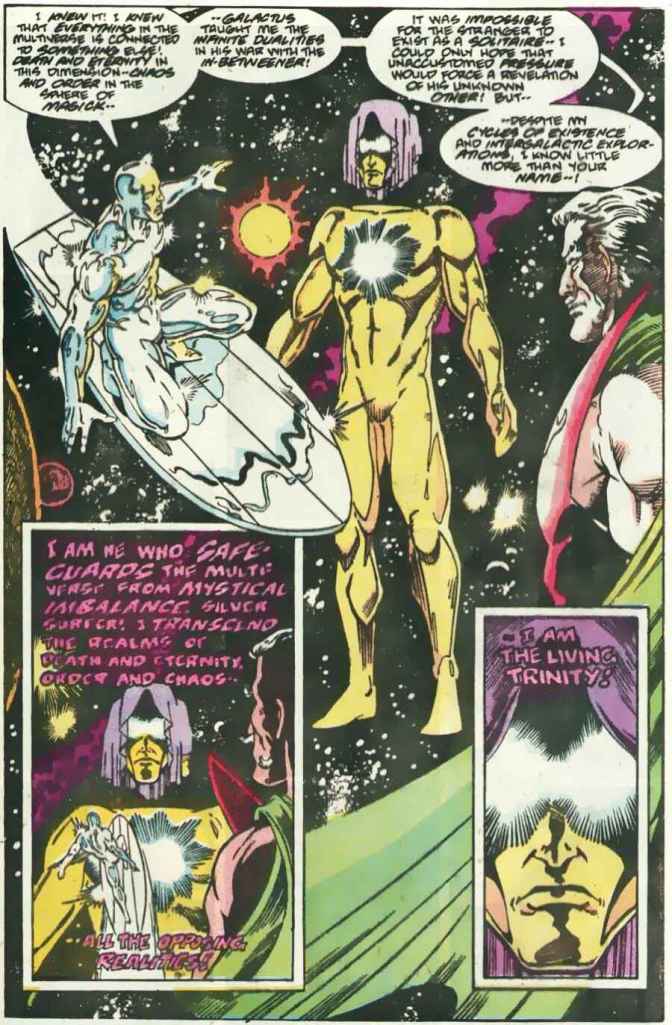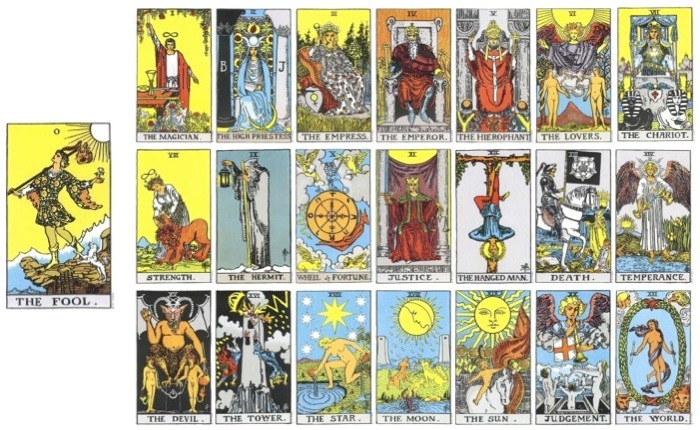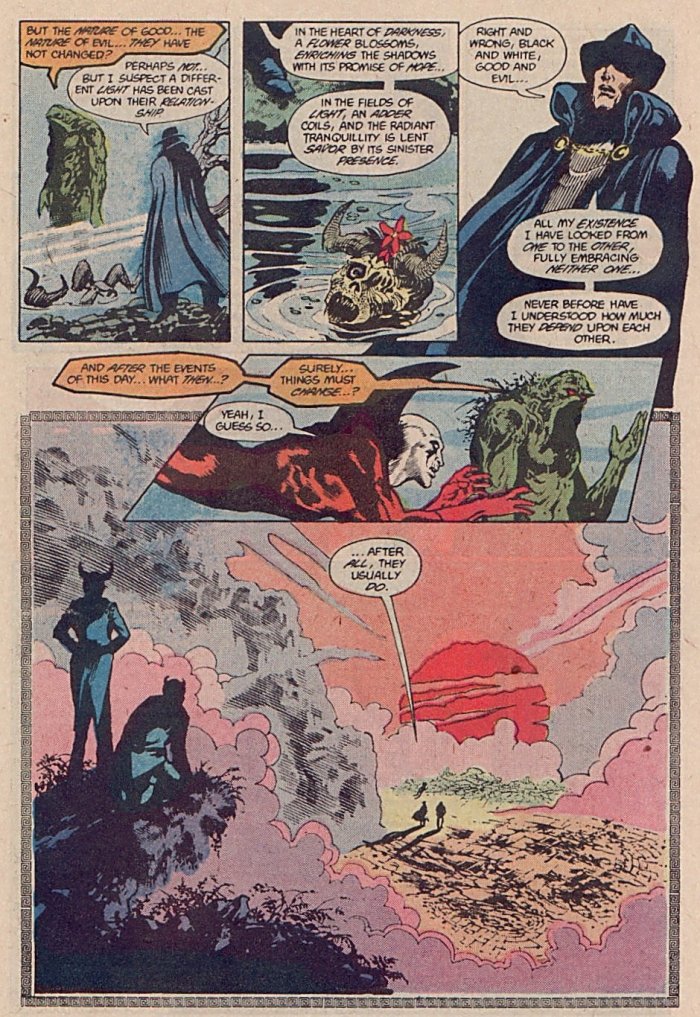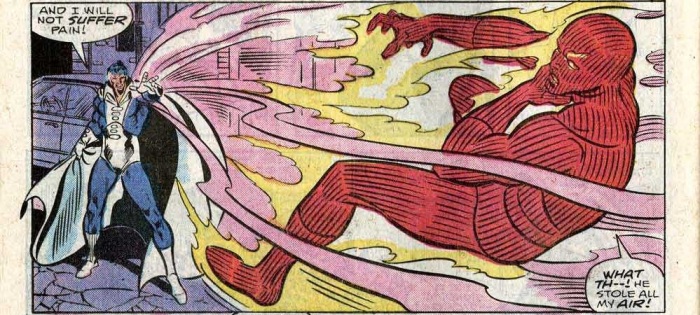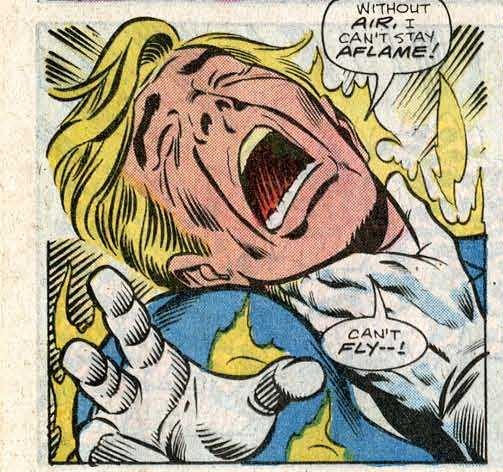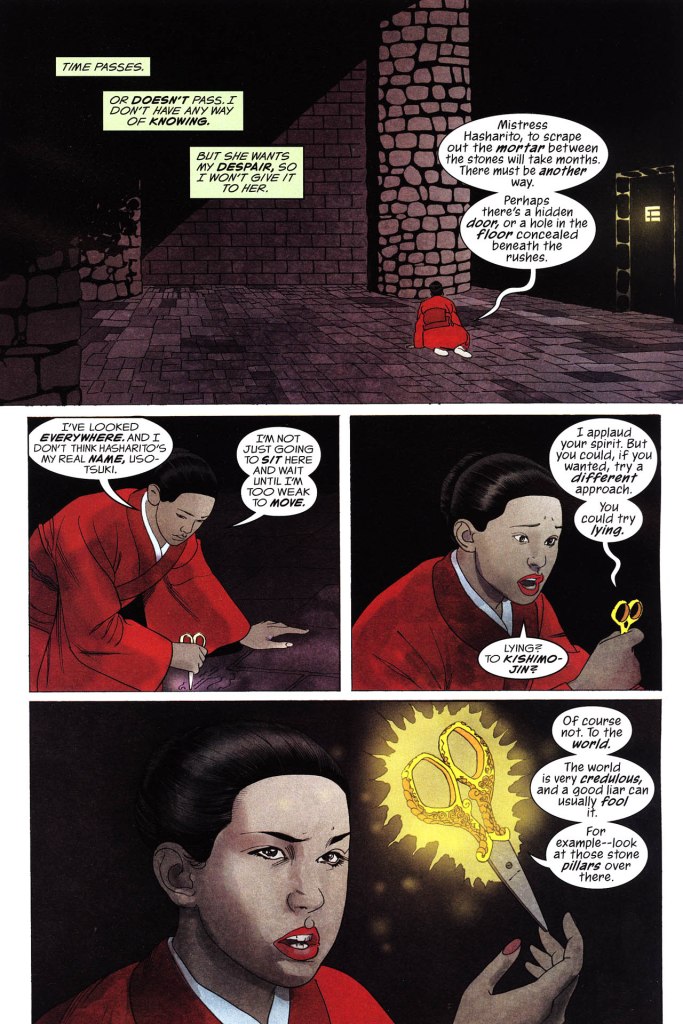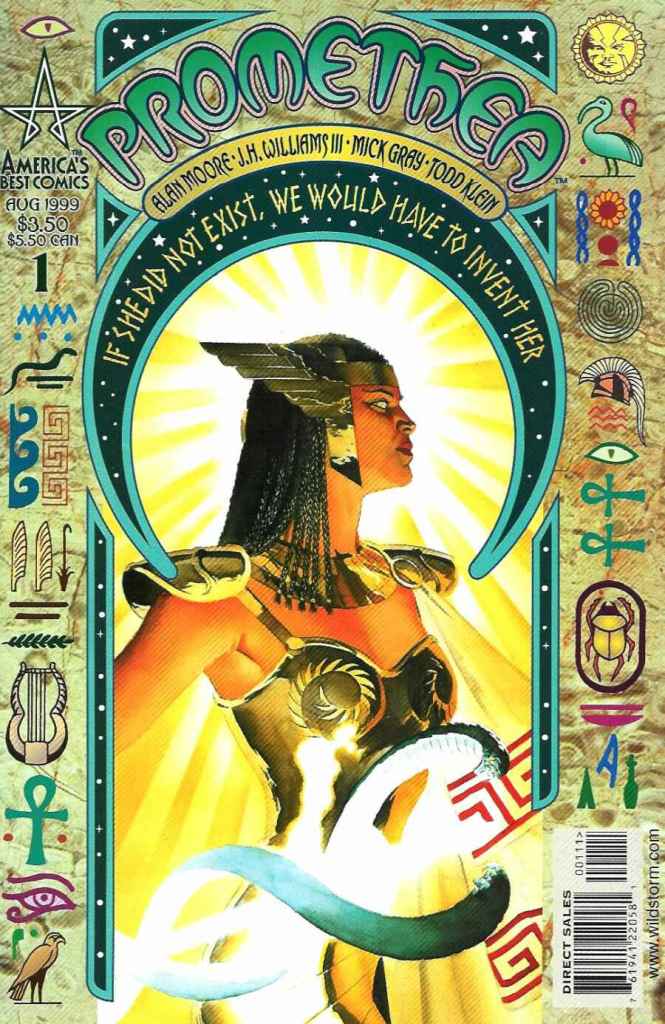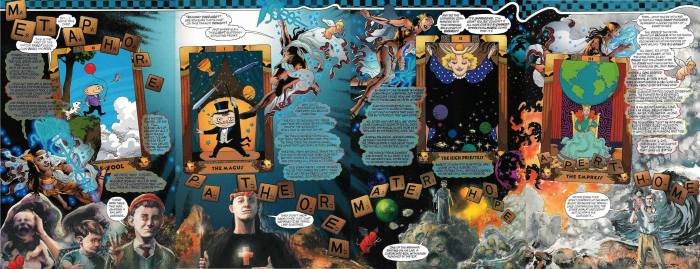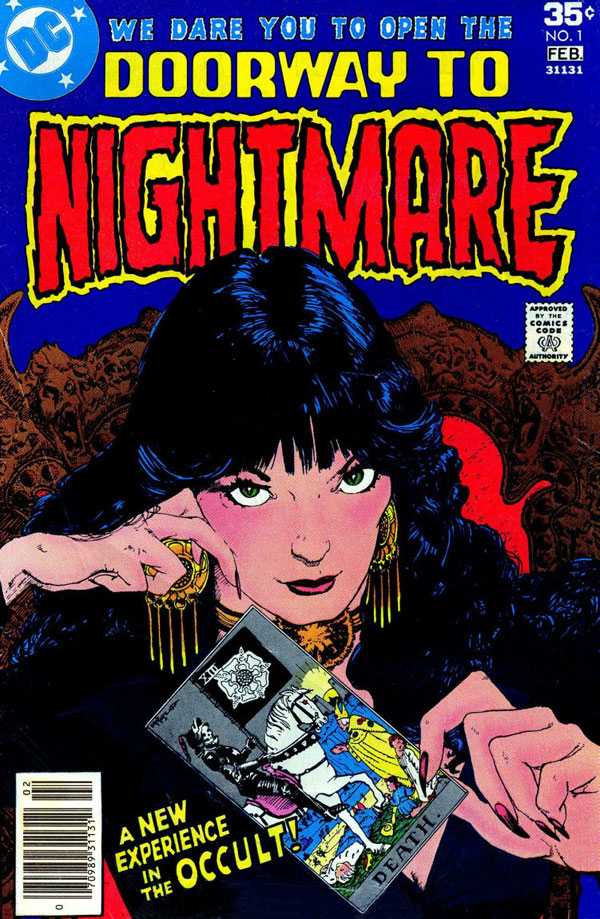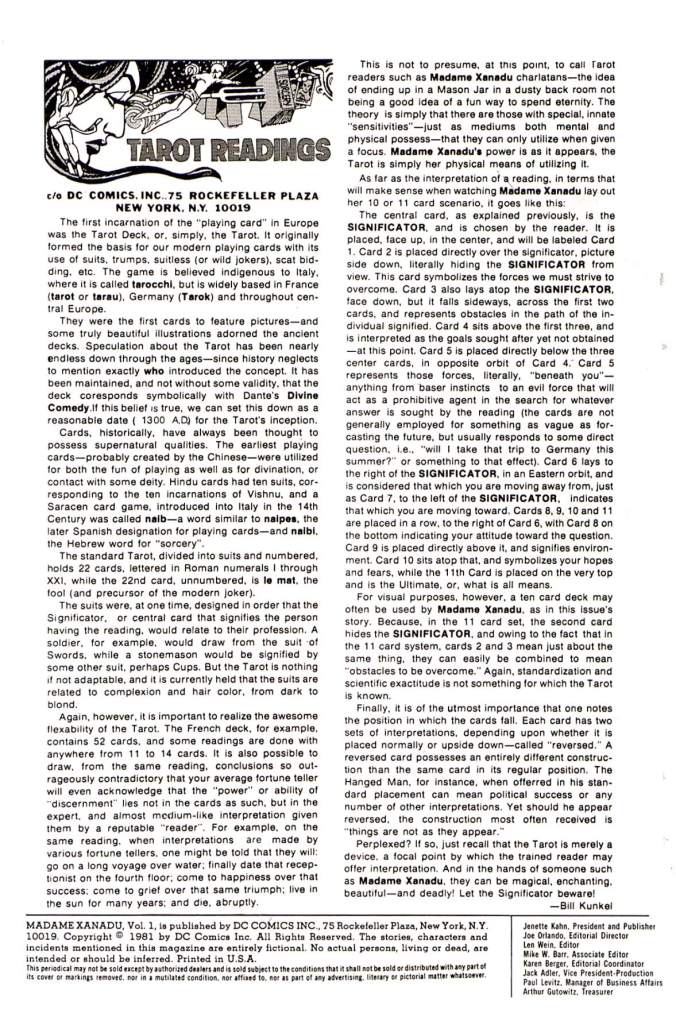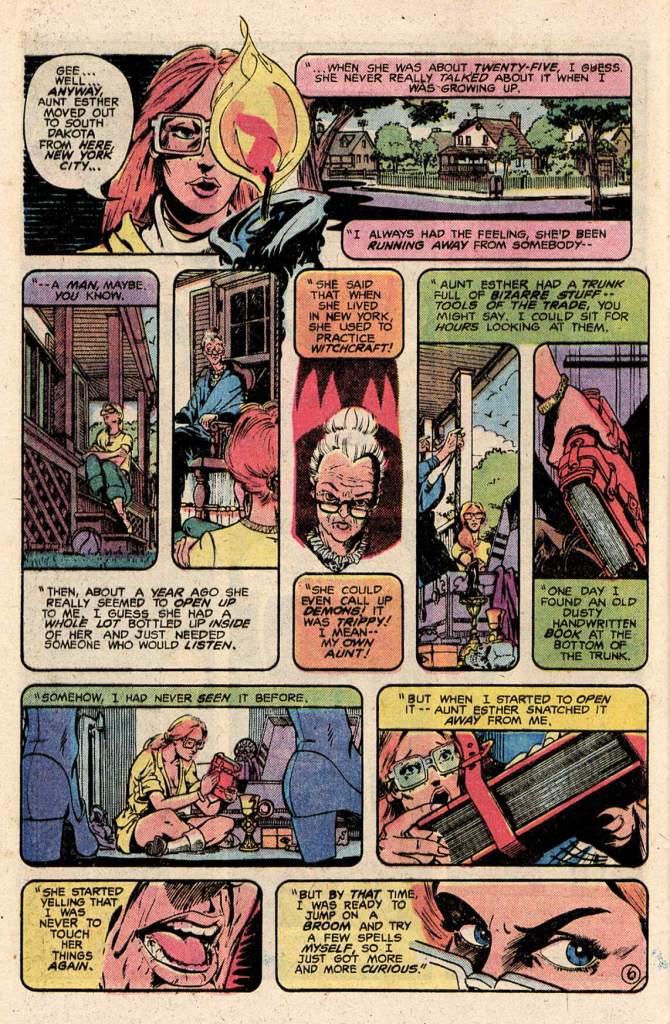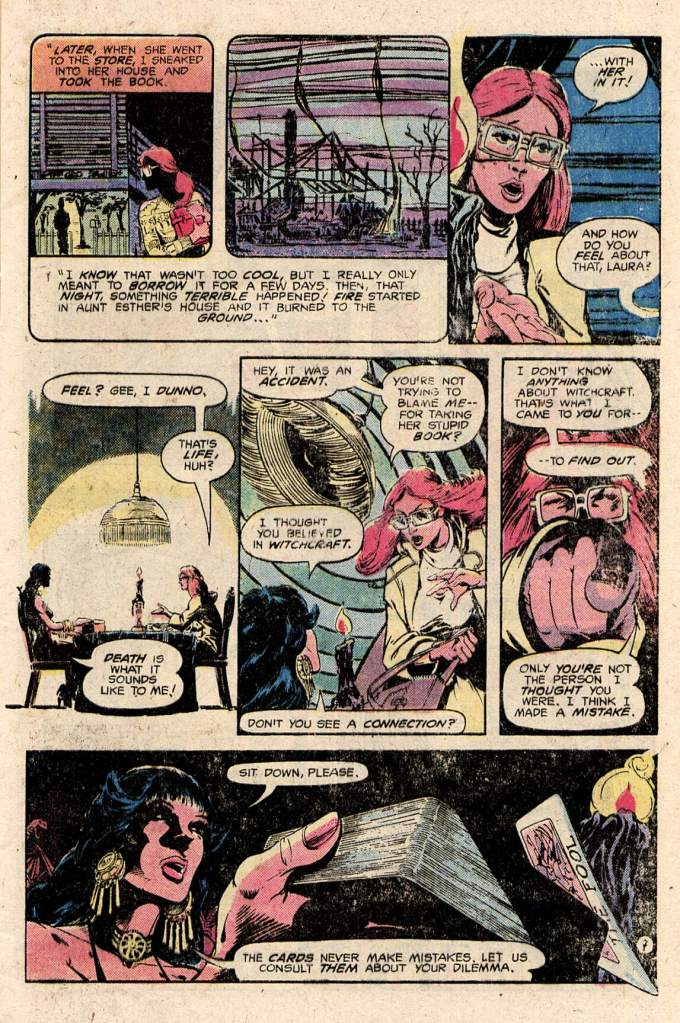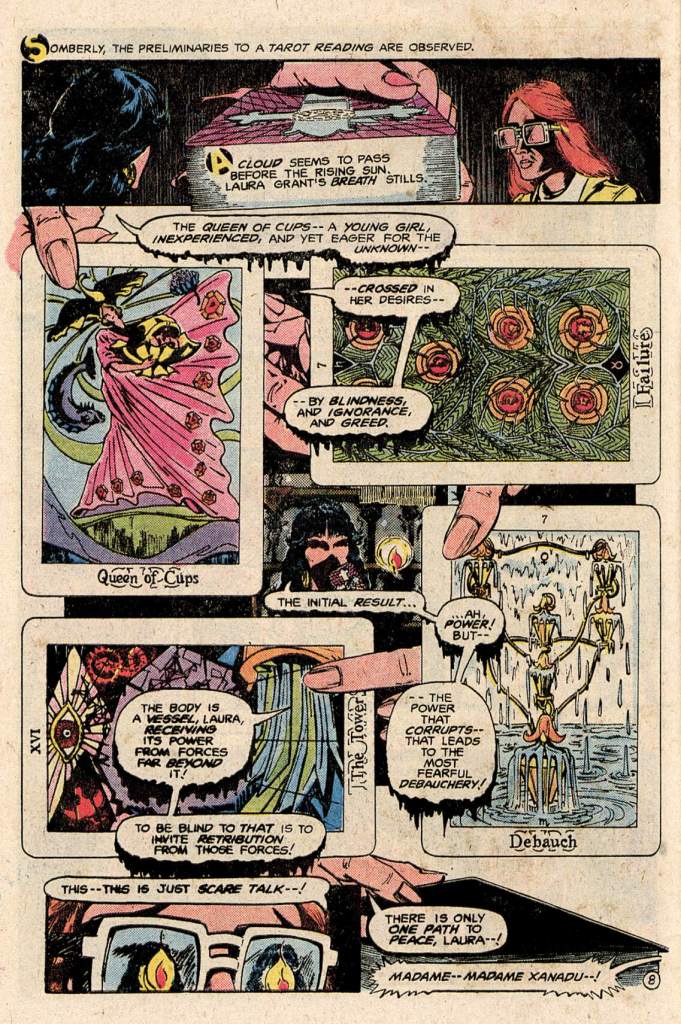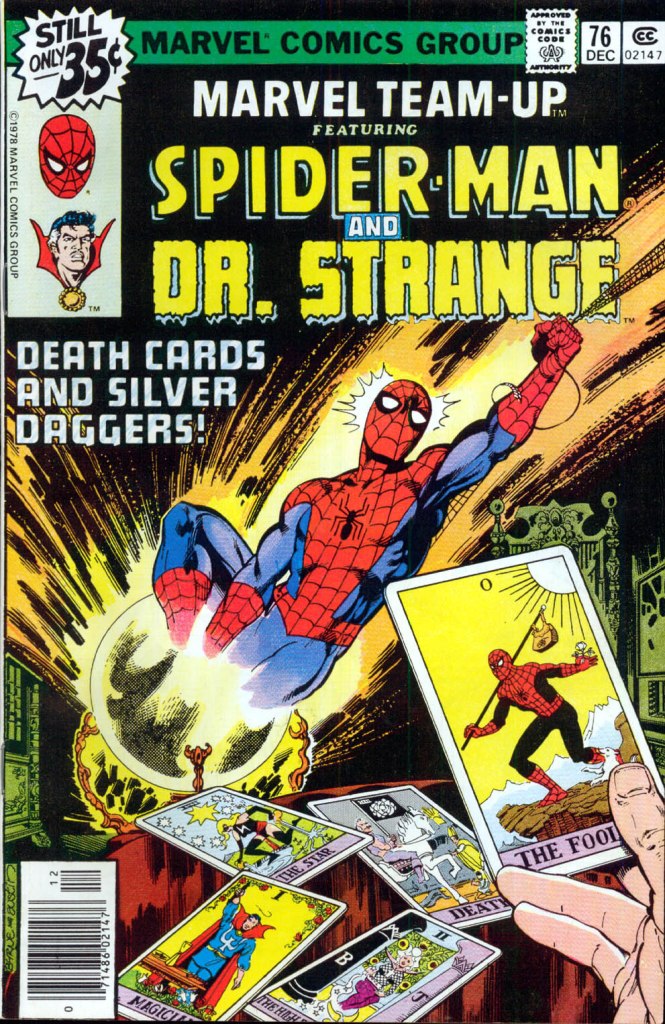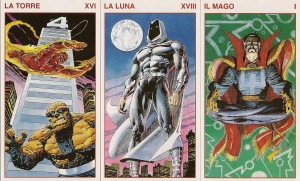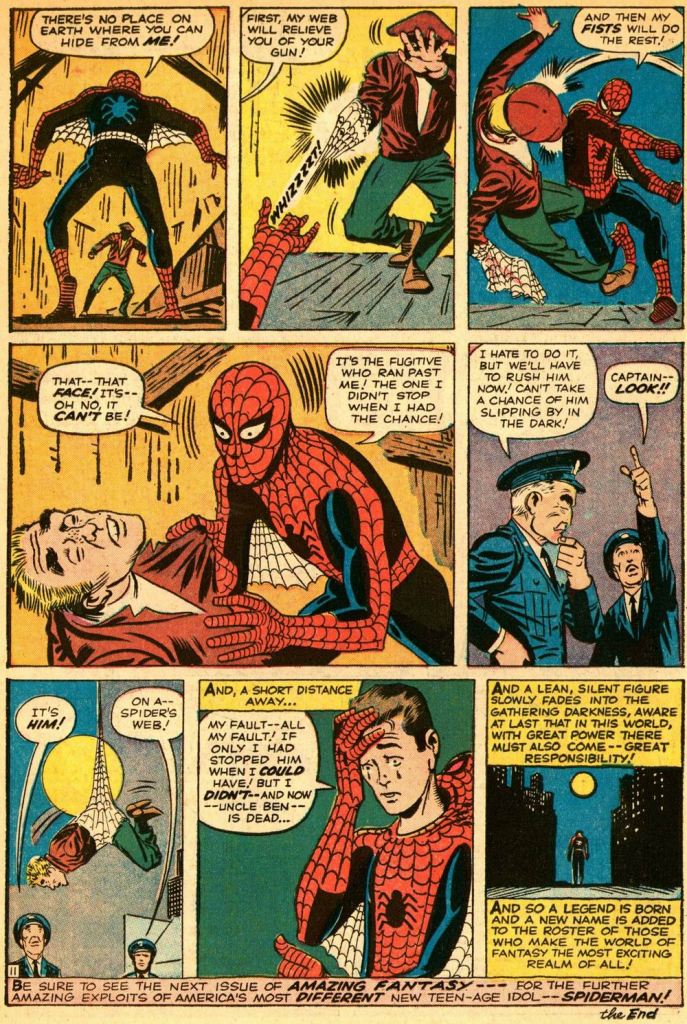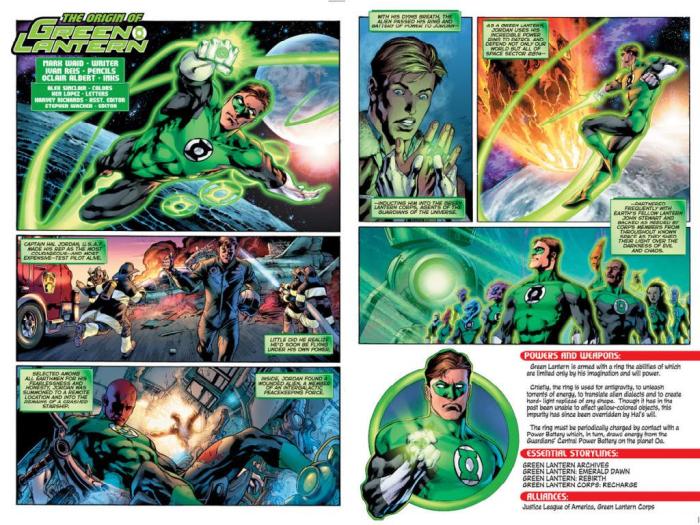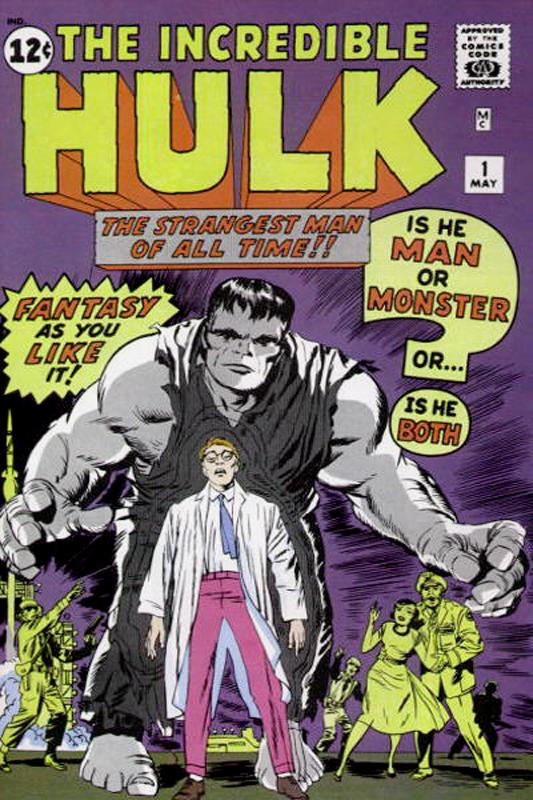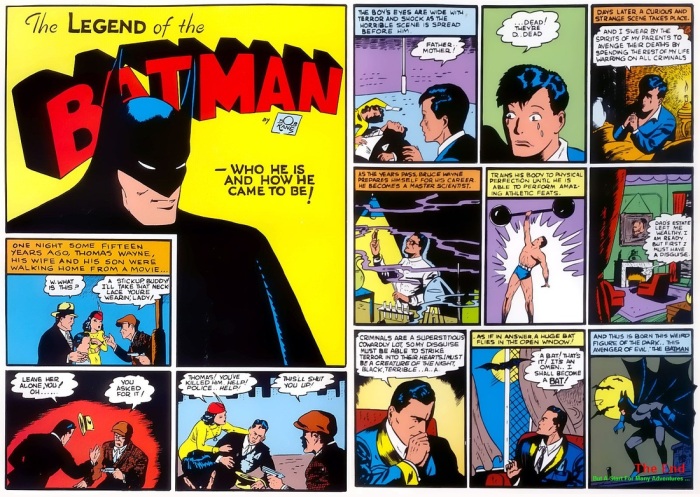This is part 2 of a three part post about my presentation at this year’s Tarot Con – U.K.. If you’ve missed part 1, you can find it here.
In this part I will present some work I chanced upon throughout the years. Books that for one reason or another made me stop and ponder a while, and from which I took ideas that later on would coalesce and build up into my personal view of the tarot. It was not a neat journey as it would appear by reading this post, and sometimes, comics that I will present side by side have reached out to me throughout the years.
This is also the part that mostly deviates from the presentation I gave at Keswick, so if you did attend it, just follow through and you’ll see how everything ties together.
Oddly enough, this journey starts not with a comic book, but with a TV series: Jim Henson’s The Storyteller was one of those TV series that retold several European folk tales using a mixture of live actors and puppets. In one of the episodes, right at the end, the dog questions the storyteller about a detail in the story that supposedly didn’t make any sense. The storyteller’s answer was very simple:
“Ah…, you see? But that’s the thing. You should always trust the story, for the story always tells the truth. But you should never, ever, trust the storyteller”.
This little line forever changed the way I related to stories. To what I saw or read. No longer were they these little pieces of fiction without consequences, but rather strange new worlds that would somehow touch our own world. It didn’t matter that they lived in the minds of people, its only actual physical presence the inks and papers they depended on… they existed here with us and would tell us everything we ever wanted to know about life, the universe and everything. So when a story presented us something that made us stop, well then… we should really stop and hear what it has to say, for its of the upmost importance. And even today I find echoes of that distant past. One of the most rewarding ones has been Mike Carey and Peter Gross’ series The Unwritten, about a Harry Potter look-alike character who possesses an immense knowledge about literary geography and who might or might not be a fictional character that actually crossed the line between fiction and reality. It’s a really wonderful series and you can find it here.
Anyway… comic books and tarot…
When we start learning the various meanings of cards, we get a list of keywords. An immense list of keywords and some of them are contradictory. For example, for Strength, we might find “Pleasure” and “Fight”; for The Star, we might see “Hope” and “Illusion”, etc., etc. We are told that cards can have positive meanings and negative meanings and that the actual meaning will depend upon the context of the reading. Opposites coexisting side by side, from which we get to pick the correct meaning for each situation depending on factors like intuition, logic, and pure dumb luck.
For a long time, my vision was exactly like that. Until I chanced upon a comic written by Steve Englehart that depicted a fight between two characters, Galactus and the In-Betweener, where the first defined itself as “the absence of opposites” and the second as “the meeting of opposites”. The comic was The Silver Surfer #18, part of a series of stories that explored how to deal with opposite concepts.
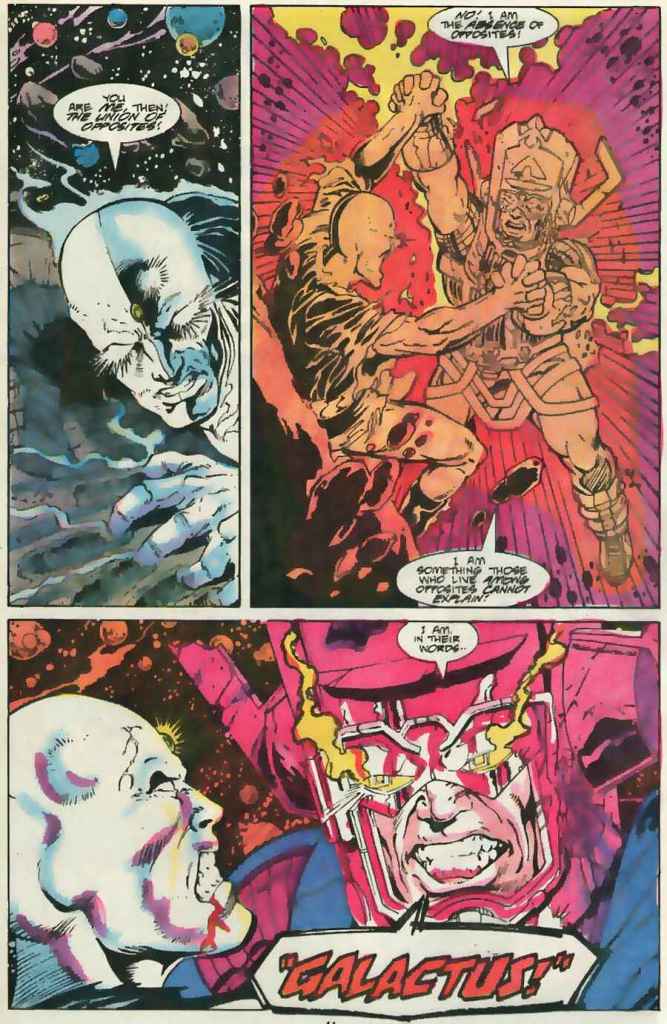
In the comic, Galactus (or the absence of opposites) ends up winning the fight, simply because he doesn’t have to jump from one state to the other; from positive to negative; from life to death; from pleasure to pain. He could be both of them at the same time and that enabled him to become something else… A balanced being.
Other issues would follow on this idea and try to figure out how to bridge two opposing concepts. And, at the end of the run (in Silver Surfer #31), we get these two pages that tell us that between every two concepts, every two opposing ideas there is a third one, a concept/idea that links both sides and as such is made from both sides of the coin, but is its own thing. And then, I started to look at the Tarot, and each Major Arcana was defined as the path that linked two Sephirahs… Each card was not meant to be just “Yes” or “No”; “Positive” and “Negative”, but something that contained both aspects and everything in between.
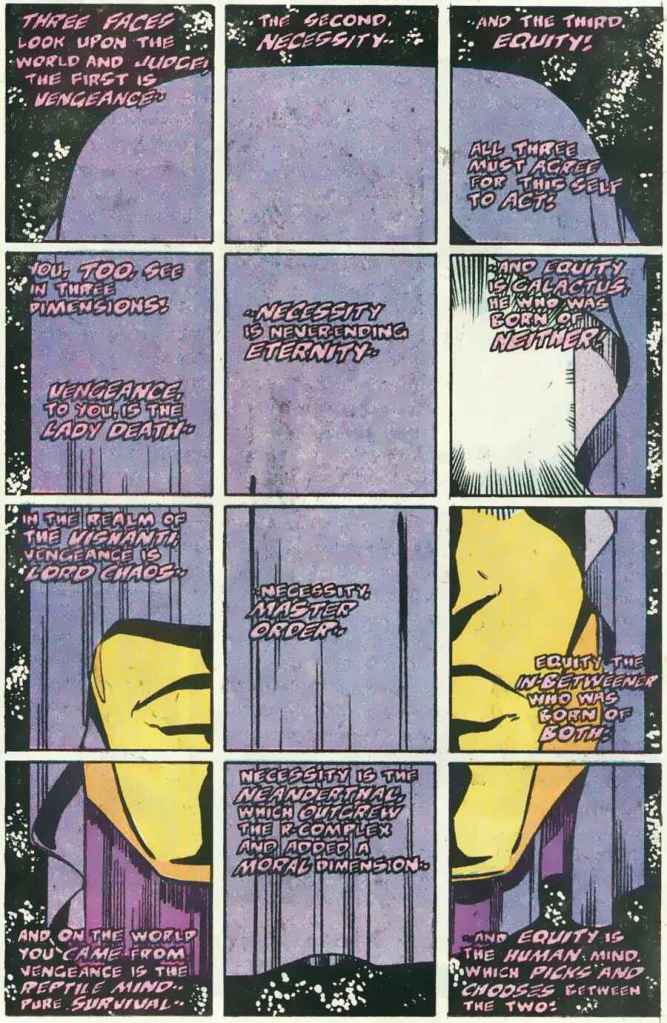
This led me to something else I saw years before in a Hulk comic. Now, the Hulk had been this rage-fuelled monster that existed inside the body of Bruce Banner, a scientist. His dark, primitive side. And for more than 30 years, that was all that he was. Until a writer, by the name of Peter David came along and had the idea of integrating both the puny, cerebral human side of Bruce Banner and the primeval monstrous side of the Hulk into a single entity:
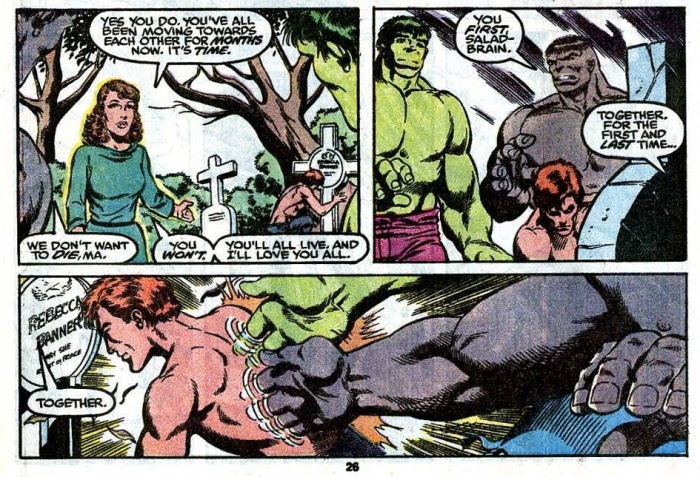
And I remembered an Alan Moore comic published more than 10 years ago, Swamp Thing #50 (reprinted here and here)
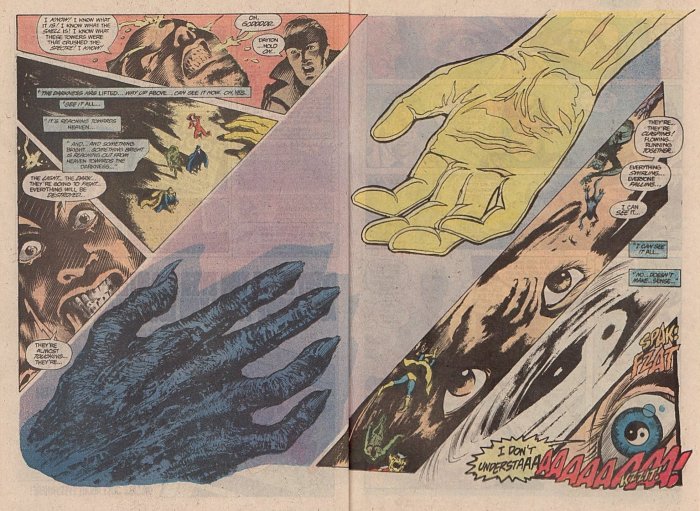
And something made a click: cards do not show us a positive or negative meaning, they show us a way to integrate whatever we have with whatever we might be missing.
Looking at the Hero’s Journey, and how it relates to the Major Arcana, we can establish three different sets of cards, as depicted bellow:
Applying what was said above, we can again see the same principle: a first set of cards, between The Magician and The Chariot, which I usually call “The Path of Innocence”, in honour of the William Blake’s “Songs of Innocence and Experience” and a third path, from Atu XV – The Devil to Atu XXI – The Universe, or “The Path of Experience”. And it’s easy to see how the each card in the middle row relates to the one that is directly above it and below it. How it takes elements of both end-cards and builds something else.
This all seemed nice and clear until a few years ago I stumbled upon this particular page, taken from Firestorm #96, which had this most interesting caption: “From awareness grew the knowledge of impulse and reason (…) that guide our decisions”
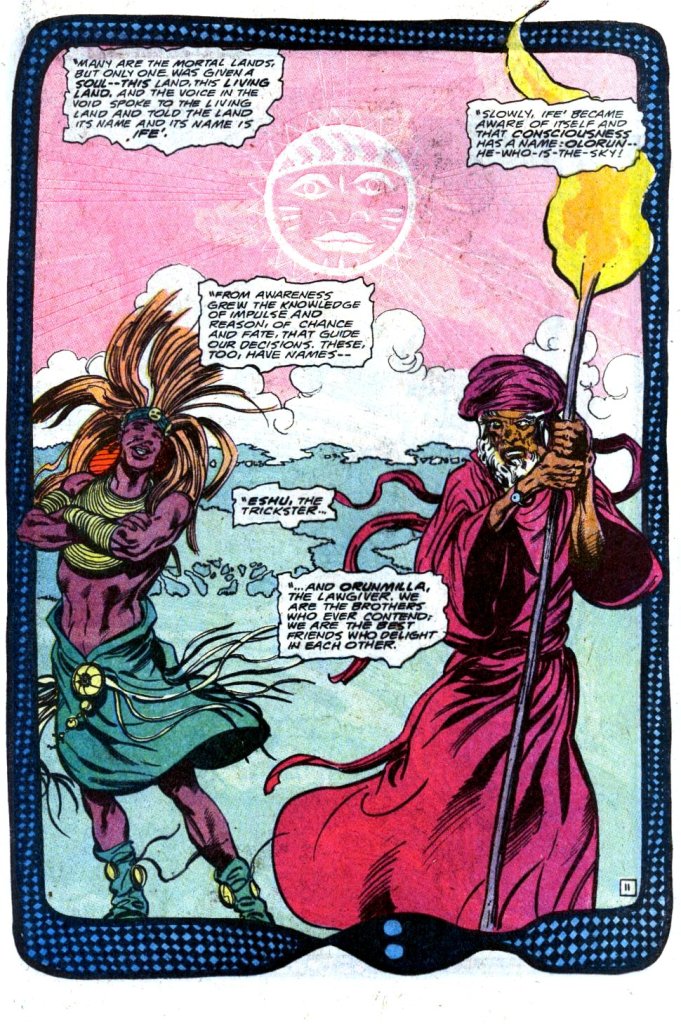
Going back to the Major Arcana, one easily recognizes the “Impulse” and “Reason” as keywords to as The Wheel of Fortune and the Justice cards. And that’s all that one needs to make a decision. Placing the Major Arcanas in two rows, we get other interesting pairs:
Pairs like The Hermit (Scientific knowledge) and “The Hanged Man (Intuitive knowledge); Strength (Life) and Death, and so on. But more interesting still, is the combination of The Hierophant with The Tower, where we see portrayed the influence of God upon Man (The Hierophant) and Man’s attempt to reach out to God’s level. Or, to put it in another way, where duality first appears, and where it is resolved. And, in this aspect, The Star assumes an added importance: it’s hope, yes, because it’s a return to Unity; A new birth where everything shines in a new light. Or, as Alan Moore stated, again, in Swamp Thing #50,
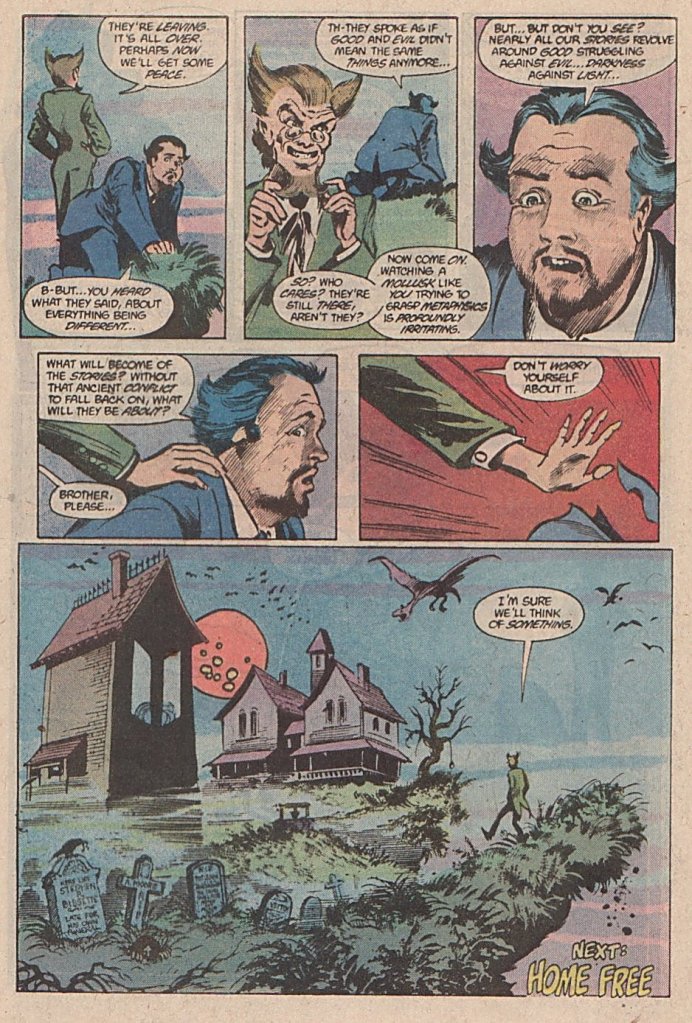
So, where does this leaves the Minor Arcana?
Well, the Minor Arcana are related to the Alchemical elements. Fire, Water, Swords and Pentacles. Or Will, Love, Reason and Material Resources. In the Rider Waite deck, these cards depict also depict journeys. Not the mythical journey, but the day-to-day struggles. If we want to turn to stories, we should not look at the concepts, at the ideas, but at the actual paths the characters make. We should look at biographies. Sure, there’s still plenty of ideas and concepts one can milk stories from, as we can see from these examples:
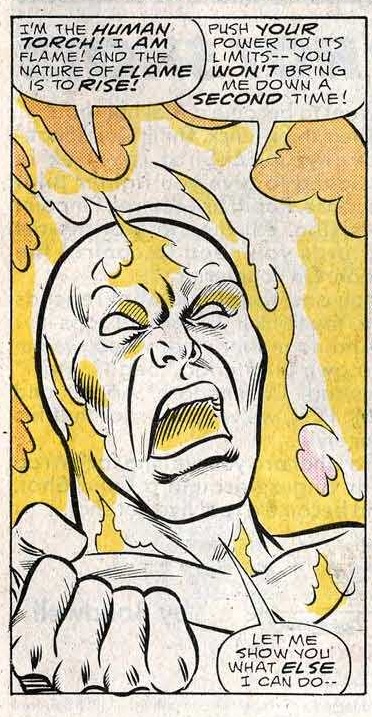
And
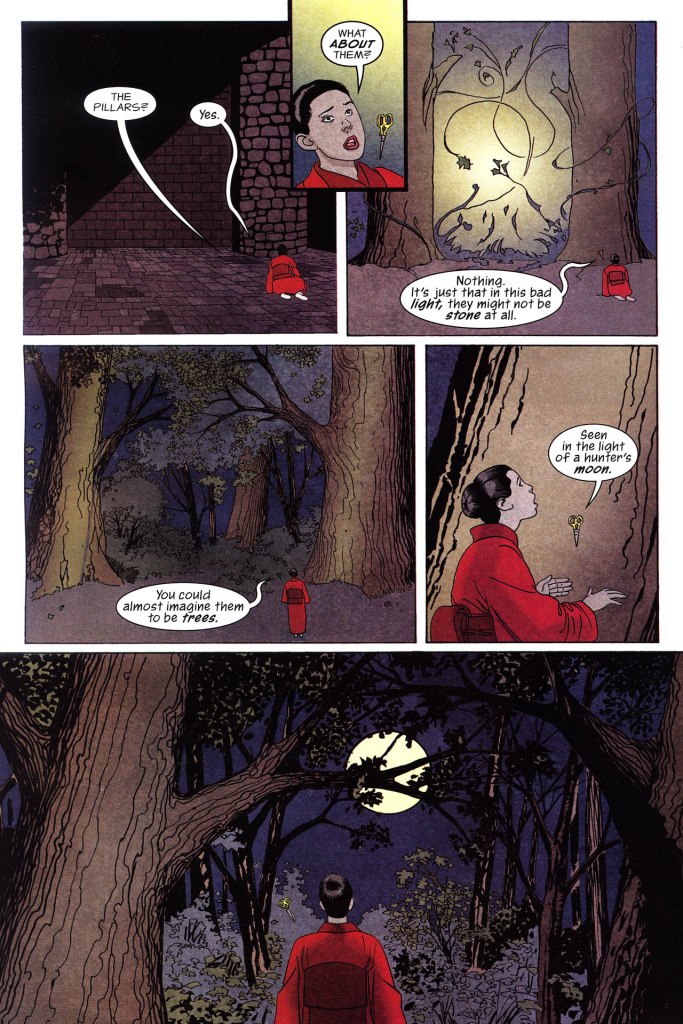
But we’re probably better served when looking at a character’s evolution. To understand Fire, we need to understand Will, determination, creative energy. How to fuel this determination and channel it to our objectives. Mike Carey’s series Lucifer (which you can find here) tells us the story of how Lucifer pretended to escape his creator’s role by creating a new Universe that might better correspond his point of view. What it takes to bring something forward and defend it, sustain it and, ultimately, make it stand.
For swords, we could turn to the stories of the samurais. Swords are about reason, but they are also about balance, fluidity and adjustment. In order to live by the sword, one must be centered, fluid, and disciplined. Takehiko Inoue’s Vagabond (available here) brings us the fictionalized account of Miyamoto Musashi, considered the greatest samurai that ever lived. How he learned his trade. How he incorporated the zen teachings he chanced upon, and how he developed his own style of fighting, a style that made impossible for any opponent to get near him, het alone cut him down.
Pentacles is an easy one. If you want to learn about resources, social networks and money, you need to look no further than Uncle Scrooge. Of particular interest is Don Rosa’s The Life and Times of Scrooge McDuck (available here), where he tell us the story of how Scrooge got rich, in ten chapters that closely correspond to the suit of Pentacles. Also of interest are Carl Bark’s stories featuring Uncle Scrooge. Carl Barks was the creator of Uncle Scrooge and the one that got to define his personality and charm. And it’s interesting to see that for all the pettiness and the eye for business, he also gave Scrooge a heart that shone even more brightly than any gold coin he might find.
Which leaves us with Hearts. Love, feelings and relationships. The bonds that allows us to nurture ourselves and grow. The bonds that ultimately will define where we came from and who we are. David Mack’s Kabuki series (available here) is all this and more. A love letter to his mother, and then to himself it shows us how everything around us and everyone around us can fuel us, drive us forward and ultimately help us on our path.
And thus ends part two… a personal journey through comics and tarot that I hope might open some new avenues for you. But comics have more to teach us than just stories. Join us tomorrow for part 3, where we look at what else can comics bring us that’s of interest to tarot readers. In the meanwhile, do browse our archives for some other goodies

